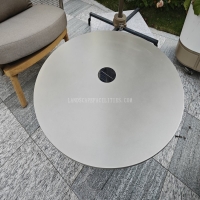Welcome to the website for landscape facilities products and knowledge.
How does marble’s polish affect heat reflection?
Marble, a natural stone prized for its elegance and durability, exhibits unique thermal properties influenced by its surface finish. The polish of marble significantly impacts its ability to reflect heat, making it a critical factor in architectural and design applications.
When marble is highly polished, its surface becomes smoother and more reflective. This smoothness reduces microscopic irregularities, allowing the stone to reflect a greater portion of incident heat. Studies suggest that polished marble can reflect up to 30% more thermal energy compared to unpolished or honed surfaces. This property makes polished marble an excellent choice for environments where heat management is essential, such as sunlit floors or exterior cladding.
Conversely, unpolished or textured marble surfaces absorb more heat due to their rougher texture, which traps thermal energy. This absorption can lead to higher surface temperatures, making such finishes less ideal for hot climates. The polish level also affects marble's emissivity—the ability to release absorbed heat. Polished marble tends to retain less heat over time, ensuring cooler surfaces in prolonged exposure to sunlight.
In summary, the polish of marble directly influences its heat reflection capabilities. A high-gloss finish enhances reflectivity, while a matte or rough surface promotes heat absorption. Understanding this relationship helps in selecting the right marble finish for optimal thermal performance in both residential and commercial settings.
Related search:

Recommendation
Outdoor stainless steel table with solar-powered ambient lighting feature - excellent design.